Abstract
Parathyroid hormone (PTH) is the major hormone regulating calcium metabolism and is involved in both catabolic and anabolic actions on bone. Intermittent PTH exposure can stimulate bone formation and bone mass when PTH has been injected. In contrast, continuous infusion of PTH stimulates bone resorption. PTH concentration may be affected by physical exercise and our review was designed to investigate this relationship. The variation in PTH concentration appears to be influenced by both exercise duration and intensity. There probably exists a stimulation threshold of exercise to alter PTH. PTH regulation is also influenced by the initial bone mineral content, age, gender, training state, and other hormonal and metabolic factors (catecholamines, lactic acid and calcium concentrations).
Key Points.
Physical exercise can improve PTH secretion.
Parathyroid hormone has both anabolic and catabolic effects on bone: intermittent treatment of PTH is anabolic whereas continuous treatment is catabolic.
Key words: Parathyroid hormone, physical exercise, calcium, catabolic/anabolic effects
Introduction
Physical exercise has frequently been shown to induce bone mass gain, especially in load-bearing bone sites (Maïmoun et al., 2003). Exercise may thus be an important factor in preventing osteoporosis (Dalsky, 1987), by either increasing the peak bone mass during childhood growth (Bradney et al., 1998) or decreasing the rate of bone loss in the elderly (Lane et al., 1990).
Anabolic effects of exercise training are not limited to individuals participating in competitive sports who focus particularly on improvements of muscle strength and endurance. For example, physical inactivity (Layne and Nelson, 1999), prolonged immobilization (Uebelhart et al., 1995) or lack of gravitational mechanical loading (e.g. space flight) (Cavanagh et al., 2005) lead to destructive bone loss, while bone formation dramatically increases when immobilized subjects resume exercise (Marcus, 1996). This has led to the popular conclusion that physical activity enhances bone formation and, consequently, bone mineral density (BMD) (Eliakim and Beyth, 2003; Vainionpaa et al., 2006). BMD is also influenced by heredity (Pocock et al., 1987) and environment (Ziegler et al., 1995). Mechanical load represent one of the major environmental factors to influence BMD and bone metabolism (Frost, 1988).
Moreover, the potential contribution of physical activity to increase bone mass is particularly important in children and adolescents since BMD reaches about 90% of its peak by the end of the second decade (Glastre et al., 1990) and because about one quarter of adult bone is accumulated during the two years that surround the peak bone velocity (Baily, 1997). This supports the idea that patterns of physical activity during childhood and adolescence can act to prevent bone disorders (like osteoporosis) later in life.
Osteoporosis and low bone mass are one of the major public health problems affecting elderly subjects (Kelley et al., 2000). Several pharmacological treatments have been used in preventing or attenuating osteoporosis, notably alendronate sodium, risedronate sodium, zoledronic acid, and selective estrogen receptor modulators, such as raloxifene (Cavanagh et al., 2005). There has also been interest in anabolic agents such as parathyroid hormone (PTH), vitamin D and calcium (Cavanagh et al., 2005) recently. Exercise has been recommended as a nonpharmacological approach for maximizing bone mineral density during the younger years (Snow-Harter and Marcus, 1991).
Measurement of bone biochemical markers can also provide a practical way for early detection of the exercise response on bone cells. Serum bone alkaline phosphatase (B-ALP) and serum osteocalcin were used to reflect newly synthesized bone (Price et al., 1980; Garnero and Delmas, 1993). Maimoun et al., (2006) reported a significant rise (10 and 12%) in both biochemical markers to 50- min cycling tests performed at 15% above the ventilatory threshold. This observation likely indicates an immediate anabolic effect of exercise on bone tissue.
Parathyroid hormone (PTH) which is the major regulator of bone metabolism functions to maintain the calcium-ion concentration of the extracellular fluids within physiological limits (Arnaud et al., 1967). PTH is also a primary determinant of intracellular calcium homeostasis (Rasmussen, 1968). The principal target organs for PTH are the kidney (increasing proximal tubular resorption of calcium, phosphate excretion and 1,25 dihydroxyvitamin D formation) and the skeleton. An indirect effect, increasing intestinal calcium absorption, is mediated by the increase in 1,25 dihydroxyvitamin D formation in the kidney (Poole and Reeve, 2005).
PTH has biphasic effects on bone: continuous treatment is catabolic (Qin et al., 2004; Thomas et al., 2006) whereas intermittent treatment is anabolic (Locklin et al., 2003; Qin et al., 2004). Several investigations showed that graded exercise until exhaustion (Brahm et al., 1997a) and continuous (2 exercises of 21 minutes each at respectively 70 and 85% of VO2max) or intermittent (2 exercises of 21 minutes each at respectively 70 and 85% of VO2max separated by 40 minutes recovery) sub-maximal exercise (Bouassida et al., 2003) enhances PTH concentrations. On the other hand, Kristoffersson et al., 1995 and Brahm et al., (1997b) have failed to demonstrate significant changes in PTH concentration after a short-term maximal work (modified Wingate test at 7.5% of body weight) (Kristoffersson et al. , 1995) and a short lasting dynamic exercise (15 minutes at 61% of peak one leg oxygen uptake) (Brahm et al. , 1997b).
Although the effects of PTH on bone metabolism have been intensively studied, there is a paucity of literature relating the effect of physical exercise on PTH concentrations. In this review, we discuss the biological effects of PTH on bone and we outlined the present knowledge about its concentrations in response to physical exercise.
Biological Effects of the Parathyroid Hormone on Bone
A key factor in the control of bone remodeling is parathyroid hormone, the principal regulator of calcium homeostasis. Calcitonin (Rong et al., 1999), pH (Chambers et al., 1983) and catecholamines (Joborn et al., 1990) can also modify PTH secretion. Elevated levels of PTH increase bone turnover, leading to either anabolic or catabolic effects on the skeleton depending upon the pattern and duration of elevation (Poole and Reeve, 2005). The normal reference range of PTH concentrations is 0.5-5.0 pmol-1 in young adults (Hodsman et al., 1993) and is 0.40-1.08 IU in males below the age of 50 (Ljunghall et al., 1988).
Anabolic Effects of Pth on Bone
Daily recombinant human PTH [PTH (1-34)] injections (30 mg·kg-1 during 35 days) in male rats with femoral fractures enhanced fracture- healing by increasing bone mineral content and density and strength, and it produced a sustained anabolic effect throughout the remodeling phase of fracture-healing (Alkhiary et al., 2005).
Two groups of rabbits underwent right tibia lengthening by callus distraction, and it was found that intermittent PTH (1-34) treatment (5 or 25 mg·kg-1 during 20 days) improved mineralization, and structural indices of regenerated distracted rabbits’ tibia. Treatment at a dose of 25 mg·kg-1 of PTH (1-34) was significantly more effective than 5 mg·kg-1 of PTH (1-34) dose treatment when compared to the control group (Aleksyniene et al., 2006).
In humans, Miki et al., 2004 showed that intermittent subcutaneous administration of 1-34 N-terminal peptide of human parathyroid hormone (hPTH 1-34) (100 units/week during 1 year) in patients with primary osteoporosis increased the mean lumbar bone mineral density by 1.8%, 3.4%, and 4.6% after 12, 24, and 48 weeks of hPTH administration. These authors concluded that intermittent weekly subcutaneous injections of hPTH (1-34) for 48 weeks increased trabecular bone volume and improved microstructure, without causing the appearance of abnormal bone elements in primary osteoporosis (Miki et al., 2004).
The mechanisms responsible and implied in these two mechanisms are not yet entirely elucidated. It has been proposed that intermittent PTH injection exerts its anabolic effects at three steps of bone formation: (1) stimulating the proliferation of preosteoblasts; (2) promoting the differentiation of preosteoblasts and osteoblasts; and (3) inhibiting osteoblast apoptosis (Qin et al., 2004).
Catabolic Effects of Pth on Bone
The catabolic effects of PTH result from pathological conditions in which one or more parathyroid glands secrete too much hormone continuously at a sustained level. Such continuous secretion of PTH (as occurs in chronic renal disease and primary hyperparathyroidism) can lead to bone destruction (Poole and Reeve, 2005).
Iida-Klein et al. (2005) suggested that short-term infusion of PTH (1-34) (40 ug·kg-1·day-1 for 10 weeks) in old female mice was catabolic with decreased trabecular connectivity density. Continuous infusion of PTH in female patients with osteoporosis (dose of 800 IU for 28 days) may inhibit bone formation by decreasing significantly the biochemical markers of bone formation (serum alkaline phosphatase, osteocalcin and the carboxy-terminal extension peptide of pro-collagen 1) (Hodsman et al., 1993).
Less is known of the mechanisms whereby continuous PTH is catabolic to the bone. Several recent studies suggested that continuous (but not intermittent) PTH can result in an increase in receptor activation of nuclear factor-kB ligand (RANKL) expression and consequent osteoclastogenesis, with an associated inhibitory effect on osteoprotegerin expression in culture (Ma et al., 2001; Locklin et al., 2003).
Parathyroid Hormone Concentration During Physical Exercise
The data of the literature concerning the relation between PTH and exercise have shown that physical exercise is an important modifier of PTH concentrations depending on intensity and duration of exercise.
Maïmoun et al., (2006) measured PTH concentrations in young male cyclists during and after two 50-min cycling tests performed at 15% below the ventilatory threshold (VT) (-VT) and 15% above (+VT) and reported a significant increase in PTH concentrations at the end and during the recovery only in the exercise performed at +VT. For both intensity levels of exercise, no significant variation in calcium serum levels was observed. These authors suggested the existence of a bone stimulation threshold for exercise to increase PTH serum concentration. Maïmoun et al., (2005) studied PTH responses before and following a maximal incremental exercise test in elderly men and women and noted that PTH concentrations were increased after the exercise and that this increase could have an anabolic action on bone turnover.
We recently showed an increase in PTH concentrations during and after two high intensity exercise protocols continuous or intermittent (continuous protocol: 2 periods running of 21 minutes each at 75% and 85% of VO2max; intermittent protocol: similar running exercises with a 40 minutes recovery period between the two exercises) performed in 12 healthy male. Our results indicate that PTH concentrations increased during and at the end of the two protocols. The comparison between the two tests indicate that PTH concentration was greater at the end of continuous protocol (p < 0.01) and that PTH remained elevated for 24 hours only in the continuous protocol (p < 0.05). This increase of PTH concentrations during these tests was accompanied by a decrease of the ionized calcium concentrations (p < 0.01). In these conditions we demonstrated that recovery between two bouts of sub-maximal exercises may have anabolic effects on bone health, however, the small physiological changes observed prevent us from forming any firm conclusion (Bouassida et al., 2003).
Thorsen et al., 1997 observed a reduction of plasma ionized calcium at 1 and 72 hours and an increase of PTH concentrations at 24 and 72 hours after endurance exercise (45 minutes running at 45% of maximal oxygen uptake (VO2max) among young women. Even though the significant increase of PTH concentration was not observed until 24 hours after the exercise, the results of Thorsen et al., 1997 indicated a preserved feedback between calcium and PTH. These results are well in line with a previous observation by Ljunghall et al., 1986 concerning long-term moderate endurance exercise (5 hours pedalling at 50% of VO2max) performed by males where serum ionized calcium was found to be slightly lowered during exercise and serum concentration of PTH elevated during the last part of the prolonged 5-hour test. In addition, Ashisawa et al., 1997 reported that strenuous exercise increased urinary calcium excretion by decreasing renal calcium re-absorption, with the development of severe metabolic acidosis. In addition, other biological factors such as catecholamines may modulate PTH secretion during exercise (Blum et al., 1978).
As found in an earlier investigation (Brahm et al., 1997a) there was also an increase in PTH concentration after a maximal exercise (10 minutes at 30% of VO2max followed by work periods of 10 minutes each at increased work loads corresponding to 47% and 76% of VO2max and at final maximal effort until exhaustion for 4-5 minutes, with a total work time of about 35 minutes) in 10 men and 10 women. During this study, PTH concentration rose in proportion to the intensity of exercise and remained elevated during the 24 hours recovery despite an increase in total serum calcium concentration. PTH is probably rapidly equilibrated between plasma and extravascular fluid (Ljunghall et al., 1985), but the persistent elevation of the concentration of serum PTH during 24 hours recovery is in line with an anabolic role of PTH (Salvesen et al., 1994) in the metabolic response to exercise.
The PTH concentration was increased during prolonged exercise at constant intensity (50 minutes at 4.2 m·sec-1) and progressive intensity (5 steps of 8 minutes with an increase of 0.25 m·sec-1 per step) performed by long distance runners (Salvesen et al., 1994). In the test with constant velocity, the runners displayed a marked increase in PTH concentration despite a rise in serum calcium. In the test with increased load, there was no correlation between the changes in PTH and total serum calcium, however, an association between the changes in PTH and lactate was reported. Indeed, subjects with a marked increase in PTH also displayed a rise in plasma lactate (Salvesen et al., 1994).
In addition, Ljunghall et al., 1988 demonstrated a significant increase in PTH and stability in total serum calcium concentration after a prolonged physical exercise (7 days of military service: field exercise maneuvers with intense physical activity) in 17 young men. These authors noted a significant relationship between the increase of serum myoglobin and the PTH concentration after the prolonged exercise indicating that the subjects who performed the largest amount of work also experienced the greatest stimulus of PTH (Ljunghall et al., 1988),
On the other hand, PTH concentration remained unaffected in seven male cyclists after 50 min cycling at 15% below the ventilatory threshold (Maïmoun et al., 2006), after 50 minutes of running at 3.3 m.sec-1 in 6 fire-fighters (Salvesen et al., 1994), after 30 seconds maximal exercise by 7 male athletes (modified Wingate test) (Kristoffersson et al., 1995) and after an intense exercise (isokinetic work with one leg with maximal force for 2 minutes) carried by 5 healthy subjects (Ljunghall et al., 1985).
During these studies, the concentration of ionized calcium or total calcium was increased. Several factors such us intensity, duration, recovery and type of exercises could explain the heterogeneity of results concerning PTH concentration and exercise.
During physical exercise, other physiological factors other than calcium can modify the secretion of the PTH such as catecholamines, acidosis and training. Several studies showed that the variations in the concentration of the PTH response during exercise were independent of the ionized calcium concentration (Henderson et al., 1989; Salvesen et al., 1994; Rong et al., 1997). In contrast, the adrenergic system is activated during physical exercise (Sagnol et al., 1990) and it was proven that this system played a role in the regulation of the PTH secretion (Joborn et al., 1990). More work is needed to ascertain the interaction of the adrenergic effects with the PTH changes with exercise.
Lactic acid and or pH can also influence the PTH concentration. Studies in animals (Lopez et al., 2002) and in humans (Lu et al., 1994; Movilli et al., 2001) showed that acidosis can stimulate PTH secretion. A study undertaken in the rat showed that acute acidosis causes, in the absence of hypocalcemia, an increase in the concentration of circulating PTH (Bichara et al., 1990).
Training (Zerath et al., 1997) and physical fitness (Brahm et al., 1997a) can also influence the response of the PTH to the exercise. Indeed, Zerath at al. (1997) demonstrated that six weeks of endurance training (75-80% of maximal heart rate, 1 hour/day, 4 days/week) enhanced exercise-related release of PTH in elderly men. These authors suggested that their findings might be important regarding bone status in the elderly, as exercise is proposed as a preventive measure against osteopenia. In addition, Brahm et al., 1997a indicated an inverse relationship between basal serum PTH concentrations and VO2 max in 10 men and 10 women with a wide range of physical capacity (range 48.2-67.1 ml·kg-1·min-1 for men and range 37.8-58.8 ml·kg-1·min-1 for women).
Conclusions
The variations of PTH concentration during and after physical exercise were both exercise duration- and intensity-dependent, which suggests the probable existence of a PTH stimulation threshold. The marked rise in PTH concentration was noted only during high-intensity (15% above VT) and long-duration (>50 minutes) or low-intensity (50% of VO2max) and very long-duration (5 hours) exercise suggests that a minimal intensity and duration is needed to induce a modification in PTH concentration. On the other hand, short-duration (30 sec) maximal exercise or long-duration (50 min) low-intensity (15% below VT) exercise seems to have no impact on PTH secretion. Consequently, in addition to the mechanical strains generated by physical exercise, both duration and intensity appear to be important parameters of PTH secretion process.
There are many interesting directions for future research in this area. It would be interesting to investigate whether higher intensities lead to increased and earlier responses of PTH secretion and it remains to be demonstrated to what extent the PTH threshold depends on factors such as age, gender, physical fitness, training status, hormonal and metabolic modifications (catecholamines, lactic acid and calcium concentrations).
Acknowledgment
This work was supported by the “Ministère de la Recherche Scientifique, de la Technologie et du Développement des Compétence, Tunisia”.
Biographies
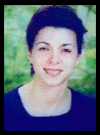
Anissa BOUASSIDA
Employment
Associate Professor, High Institute of Sport and Physical Education, Jendouba univ., Kef, Tunisia.
Degree
PhD
Research interests
Exercise and training induced hormonal and metabolic changes.
E-mail: bouassida_anissa@yahoo.fr

Imed LATIRI
Employment
Associate Professor, Faculty of Medicine Ibn El Jazzar, Sousse, Tunisia.
Degree
PhD
Research interests
Rehabilitation of diseases metabolic. Physiology of perception and action.
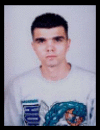
Semi BOUASSIDA
Employment
Master Student, High Institute of Sport and Physical Education, Tunis univ., Ksar Saîd, Tunisia.
Degree
Bachelor Degree
Research interests
Exercise and physical training.

Dalenda ZALLEG
Employment
Associate, High Institute of Sport and Physical Education, Jendouba Univ., Kef, Tunisia.
Degree
PhD
Research interests
Exercise and training induced cardiovascular changes.
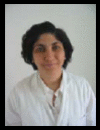
Monia ZAOUALI
Employment
Prof., Faculty of Medicine Ibn El Jazzar, Sousse, Tunisia.
Degree
PhD
Research interests
Exercise and training induced hormonal and metabolic changes.
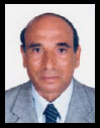
Youssef FEKI
Employment
Professor, High Institute of Sport and Physical Education, Jendouba univ., Kef, Tunisia.
Degree
PhD
Research interests
Exercise induced cardio-circulatory, respiratory, metabolic and hormonal changes.

Najoua GHARBI
Employment
Professor, Laboratory of Endocrinology, Biology Department, Faculty of Science, Tunis, Tunisia.
Degree
PhD
Research interests
Exercise and training induced hormonal and metabolic changes.

Abdelkarim ZBIDI
Employment
Director of the Faculty of Medicine Ibn El Jazzar, Sousse, Tunisia.
Degree
PhD
Research interests
Exercise induced cardio-circulatory, respiratory, metabolic and hormonal changes.
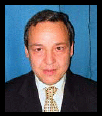
Zouhair TABKA
Employment
Professor, Faculty of Medicine Ibn El Jazzar, Sousse, Tunisia.
Degree
PhD
Research interests
Exercise induced cardio-circulatory, respiratory, metabolic and hormonal changes.
E-mail: zouhair.tabka@rns.tn
References
- Aleksyniene R., Eckardt H., Bundgaard K., Lind M., Hvid I. (2006) Effects of parathyroid hormone on newly regenerated bone during distraction osteogenesis in a rabbit tibial lengthening model. A pilot study. Medicina (Kaunas) 42, 38-48 [PubMed] [Google Scholar]
- Alkhiary Y.M., Gerstenfeld L.C., Krall E., Westmore M., Sato M., Mitlak B.H., Einhorn T.A. (2005) Enhancement of experimental fracture-healing by systemic administration of recombinant human parathyroid hormone (PTH 1-34). The Journal of Bone and Joint Surgery, American Volume 87, 731-741 [DOI] [PubMed] [Google Scholar]
- Arnaud C.D.Jr., Tenenhouse A.M., Rasmussen H.(1967) Parathyroid hormone. Annual Review of Physiology 29, 349-372 [DOI] [PubMed] [Google Scholar]
- Ashisawa N., Fujimura R., Tokuyama K., Suzuki M.(1997) A bout of resistance exercises increases urinary calcium independently of osteoclastic activation in men. Journal of Applied Physiology 83, 1159-1163 [DOI] [PubMed] [Google Scholar]
- Baily D.A. (1997) The Saskatchewan pediatric bone mineral accrual study: bone mineral acquisition during the growing years. International Journal of Sports Medicine 18, S191-S194 [DOI] [PubMed] [Google Scholar]
- Bichara M., Mercier O., Borensztein P., Paillard M. (1990) Acute metabolic acidosis enhances circulating parathyroid hormone, which contributes to the renal responses against acidosis in the rat. The Journal of Clinical Investigation 86, 430-443 [DOI] [PMC free article] [PubMed] [Google Scholar]
- Blum J.W., Fisher J.A., Binswanger U., Picotti G.B., Guillembeau A.(1978) Parathyroid hormone responses to catecholamines and to change of extracellular calcium in cows. The Journal of Clinical Investigation 61, 1113-1122 [DOI] [PMC free article] [PubMed] [Google Scholar]
- Bouassida A., Zalleg D., Zaouali-Ajina M., Gharbi N., Duclos M., Richalet J.P., Tabka Z. (2003) Parathyroid hormone concentrations during and after two periods of high intensity exercise with and without an intervening recovery period. European Journal of Applied Physiology 88, 339-344 [DOI] [PubMed] [Google Scholar]
- Bradney M., Pearce G., Naughton G., Sullivan C., Bass S., Beck T., Carlson J., Seeman E. (1998) Moderate exercise during growth in prepubertal boys: changes in bone mass, size, volumetric density, and bone strength: a controlled prospective study. Journal of Bone and Mineral Research, 13, 1814-1821 [DOI] [PubMed] [Google Scholar]
- Brahm H., Piehl-Aulin K., Ljunghall S. (1997a) Bone metabolism during exercise and recovery: the influence of plasma volume and physical fitness. Calcified Tissue International 61, 192-198 [DOI] [PubMed] [Google Scholar]
- Brahm H., Piehl-Aulin K., Saltin B., Ljunghall S. (1997b) Net fluxes over working thigh of hormones, growth factors and biomarkers of bone metabolism during short lasting dynamic exercise. Calcified Tissue International 60, 175-180 [DOI] [PubMed] [Google Scholar]
- Cavanagh P.R., Licata A.A., Rice A.J. (2005) Exercise and pharmacological countermeasures for bone loss during long-duration space flight. Gravitational and Space Biology Bulletin 18, 39-58 [PubMed] [Google Scholar]
- Chambers D.J., Dunham J., Braimbridge M.V., Slavin B., Quiney J., Chayen J. (1983) The effect of ionized calcium, pH, and temperature on bioactive parathyroid hormone during and after open-heart operations. The Annals of Thoracic Surgery 36, 306-313 [DOI] [PubMed] [Google Scholar]
- Dalsky G.P. (1987) Exercise: its effect on bone mineral content. Clinical Gynecology 30, 820-831 [DOI] [PubMed] [Google Scholar]
- Eliakim A., Beyth Y. (2003) Exercise Training, Menstrual Irregularities and Bone Development in Children and Adolescents. Journal of Pediatric and Adolescent Gynecology 16, 201-206 [DOI] [PubMed] [Google Scholar]
- Frost H.M. (1988) Vital biomechanics: proposed general concepts for skeletal adaptations to mechanical usage. Calcified Tissue Internation. 42, 145-156 [DOI] [PubMed] [Google Scholar]
- Garnero P., Delmas P.D. (1993) Assessment of the serum levels of bone alkaline phosphatase with a new immunoradiometric assay in patients with metabolic bone disease. The Journal of Clinical Endocrinol ogy and Metabolism 77, 1046-1053 [DOI] [PubMed] [Google Scholar]
- Glastre C., Braillon P., David L., Cochat P., Meunier P.J., Delmas P.D. (1990) Measurement of bone mineral content of the lumbar spine by dual energy x-ray absorptiometry in normal children: correlations with growth parameters. The Journal of Clinical Endocrinology and Metabolism 70, 1330-1333 [DOI] [PubMed] [Google Scholar]
- Henderson S.A., Graham H.K., Mollan R.A.B., Riddoch C., Scheridan B., Johnston H. (1989) Calcium homeostasis and exercise. International Orthopaedics 13, 69-73 [DOI] [PubMed] [Google Scholar]
- Hodsman A.B., Fraher L.J., Ostbye T., Adachi J.D., Steer B.M. (1993) An evaluation of several biochemical markers for bone formation and resorption in a protocol utilizing cyclical parathyroid hormone and calcitonin therapy for osteoporosis. The Journal of Clinical Investigation 91, 1138-1148 [DOI] [PMC free article] [PubMed] [Google Scholar]
- Iida-Klein A., Lu S.S., Kapadia R., Burkhart M., Moreno A., Dempster D.W., Lindsay R. (2005) Short-term continuous infusion of human parathyroid hormone 1-34> fragment is catabolic with decreased trabecular connectivity density accompanied by hypercalcemia in C57BL/J6 mice. The Journal of Endocrinology 86, 549-557 [DOI] [PubMed] [Google Scholar]
- Joborn H., Hjemdahl P., Larsson P.T., Lithell H., Olsson G., Wide L., Bergstrom R., Ljunghall S. (1990) Effects of prolonged adrenaline infusion and of mental stress on plasma minerals and parathyroid hormone. Clinical Physiology 10, 37-53 [DOI] [PubMed] [Google Scholar]
- Kelley G.A., Kelley K.S., Tran Z.V. (2000) Exercise and bone mineral density in men: a meta-analysis. Journal of Applied Physiology 88, 1730-176 [DOI] [PubMed] [Google Scholar]
- Kristoffersson A., Hultdin J., Holmlund I., Thorsen K., Lorentzon R. (1995) Effects of short-term maximal work on plasma calcium, parathyroid hormone, osteocalcin and biochemical markers of collagen metabolism. International Journal of Sports Medicine 16, 145-149 [DOI] [PubMed] [Google Scholar]
- Lane N.E., Bloch D.A., Hubert H.B., Jones H., Simpson U., Fries J.F. (1990) Running, osteoarthritis and bone density: initial 2-year longitudinal study. American Journal of Medicine 88, 452-459 [DOI] [PubMed] [Google Scholar]
- Layne J.E., Nelson M.E. (1999) The effects of progressive resistance training on bone density: a review Medicine and Science in Sports Exercise 31, 25-30 [DOI] [PubMed] [Google Scholar]
- Ljunghall S., Joborn H., Lundin L., Rastad J., Wide L., Akerstrom G. (1985) Regional and systemic effects of short-term intense muscular work on plasma concentration and content of total and ionized calcium. European Journal of Clinical Investigation 15, 248-252 [DOI] [PubMed] [Google Scholar]
- Ljunghall S., Joborn H., Roxin L.E., Rastad J., Wide L., Akerstrom G. (1986) Prolonged low-intensity exercise raises the serum parathyroid hormone levels. Clinical Endocrinology (Oxford) 25, 535-542 [DOI] [PubMed] [Google Scholar]
- Ljunghall S., Joborn H., Roxin L.E., Skarfors E.T., Wide L.E., Lithell H.O. (1988) Increase in serum parathyroid hormone levels after prolonged physical exercise. Medicine and Science in Sports Exercise 20, 122-125 [DOI] [PubMed] [Google Scholar]
- Locklin R.M., Khosla S., Turner R.T., Riggs B.L. (2003) Mediators of the biphasic responses of bone to intermittent and continuously administered parathyroid hormone. Journal of Cellular Biochemistry 89, 180-190 [DOI] [PubMed] [Google Scholar]
- Lopez I., Aguilera-Tejero E., Felsenfeld A.J., Estepa J.C., Rodriguez M. (2002) Direct effect of acute metabolic and respiratory acidosis on parathyroid hormone secretion in the dog. Journal of Bone and Mineral Research, 17, 1691-1700 [DOI] [PubMed] [Google Scholar]
- Lu K.C., Shieh S.D., Li B.L., Chu P., Jan S.Y., Lin Y.F. (1994) Rapid correction of metabolic acidosis in chronic renal failure: effect on parathyroid hormone activity. Nephron 67, 419-424 [DOI] [PubMed] [Google Scholar]
- Ma Y.L., Cain R.L., Halladay D.L., Yang X., Zeng Q., Miles R.R., Chandrasekhar S., Martin T.J., Onyia J.E. (2001) Catabolic effects of continuous human PTH (1-38) in vivo is associated with sustained stimulation of RANKL and inhibition of osteoprotegerin and gene-associated bone formation. Endocrinology 142, 4047-4054 [DOI] [PubMed] [Google Scholar]
- Maïmoun L., Lumbroso S., Manetta J., Paris F., Leroux J.L., Sultan C. (2003) Testosterone is significantly reduced in endurance athletes without impact on bone mineral density. Hormone Research 59, 285-292 [DOI] [PubMed] [Google Scholar]
- Maïmoun L., Simar D., Malatesta D., Caillaud C., Peruchon E., Couret I., Rossi M., Mariano-Goulart D. (2005) Response of bone metabolism related hormones to a single session of strenuous exercise in active elderly subjects. British Journal of Sports Medicine 39, 497-502 [DOI] [PMC free article] [PubMed] [Google Scholar]
- Maïmoun L., Manetta J., Couret I., Dupuy A.M., Mariano-Goulart D., Micallef J.P., Peruchon E., Rossi M. (2006) The intensity level of physical exercise and the bone metabolism response. International Journal of Sports Medicine 27, 105-111 [DOI] [PubMed] [Google Scholar]
- Marcus R. (1996) Mechanisms of exercise effects on bone. In: Principles of Bone Biology, (1st ed.). Edited byBilezikian JP, Raisz LG, Rodan GA. San Diego, CA, Academic Press, pp 1135-1146 [Google Scholar]
- Miki T., Nakatsuka K., Naka H., Masaki H., Imanishi Y., Ito M., Inaba M., Morii H., Nishizawa Y. (2004) Effect and safety of intermittent weekly administration of human parathyroid hormone 1-34 in patients with primary osteoporosis evaluated by histomorphometry and microstructural analysis of iliac trabecular bone before and after 1 year of treatment. Journal of Bone and Mineral Metabolism 22, 569-576 [DOI] [PubMed] [Google Scholar]
- Movilli E., Zani R., Carli O., Sangalli L., Pola A., Camerini C., Scolari F., Cancarini G.C., Maiorca R. (2001) Direct effect of the correction of acidosis on plasma parathyroid hormone concentrations, calcium and phosphate in hemodialysis patients: a prospective study. Nephron 87, 257-262 [DOI] [PubMed] [Google Scholar]
- Pocock N.A., Eisman J.A., Hopper J.L., Yeates M.G., Sambrook P.N., Eberl S. (1987) Genetic determinants of bone mass in adults. A twin study. The Journal of Clinical Investigation 80, 706-710 [DOI] [PMC free article] [PubMed] [Google Scholar]
- Poole K.E., Reeve J. (2005) Parathyroid hormone - a bone anabolic and catabolic agent. Current Opinion in Pharmacology 5, 612-617 [DOI] [PubMed] [Google Scholar]
- Price P.A., Parthemore J.G., Deftos L.J. (1980) New biochemical marker for bone metabolism. Measurement by radioimmunoassay of bone GLA protein in the plasma of normal subjects and patients with bone disease. The Journal of Endocrinology 66, 878-883 [DOI] [PMC free article] [PubMed] [Google Scholar]
- Qin L., Raggatt L.J., Partridge N.C. (2004) Parathyroid hormone: a double-edged sword for bone metabolism. Trends in Endocrinology and Metabolism 5(2), 60-65 [DOI] [PubMed] [Google Scholar]
- Rasmussen P. (1968) The role of bone tissue in calcium homeostasis. Den Norske Tannlaegeforenings Tidende 78, 713-725 [PubMed] [Google Scholar]
- Rong H., Berg U., Torring O., Sundberg C.J., Granberg B., Bucht E. (1997) Effect of acute endurance and strength exercise on circulating calcium-regulating hormones and bone markers in young healthy males. Scandinavian Journal of Medicine & Science in Sports 7(3), 152-159 [DOI] [PubMed] [Google Scholar]
- Rong H., Ji H., Tsai J.A., Pernow Y., Bucht E. (1999) Calcitonin-suppressed expression of parathyroid hormone-related protein in breast cancer cells. Biochemical and Biophysical Research Communications 65, 260-264 [DOI] [PubMed] [Google Scholar]
- Sagnol M., Claustre J., Cottet-Emard J.M., Pequignot J.M., Fellman N., Coudert J., Peyrin L. (1990) Plasma free and sulfated catecholamines after ultra-long exercise and recovery. European Journal of Applied Physiology 60, 91-97,. [DOI] [PubMed] [Google Scholar]
- Salvesen H., Johansson A.G., Foxdal P., Wide L., Pihl-Aulin K., Ljunghall S. (1994) Intact serum parathyroid hormone levels increase during running exercise in well-trained men. Calcified Tissue International 54, 256-261 [DOI] [PubMed] [Google Scholar]
- Snow-Harter C., Marcus R. (1991) Exercise, bone mineral density, and osteoporosis. Exercise and Sport Sciences Reviews, 10, 351-388 [PubMed] [Google Scholar]
- Thomas T. (2006) Intermittent parathyroid hormone therapy to increase bone formation. Joint Bone Spine 73, 262-269 [DOI] [PubMed] [Google Scholar]
- Thorsen K., Kristoffersson A., Hultdin J., Lorentzon R. (1997) Effects of moderate endurance exercise on calcium, parathyroid hormone, and markers of bone metabolism in young women. Calcified Tissue International 60, 16-20 [DOI] [PubMed] [Google Scholar]
- Uebelhart D., Demiaux-Domenech B., Roth M., Chantraine A. (1995) Bone metabolism in spinal cord injured individuals and in others who have prolonged immobilisation. A review. Paraplegia 33, 669-673 [DOI] [PubMed] [Google Scholar]
- Vainionpaa A., Korpelainen R., Vihriala E., Rinta-Paavola A., Leppaluoto J., Jamsa T. (2006) Intensity of exercise is associated with bone density change in premenopausal women. Osteoporosis International 17, 455-463 [DOI] [PubMed] [Google Scholar]
- Zerath E., Holy X., Douce P., Guezennec C.Y., Chatard J.C. (1997) Effect of endurance training on postexercise parathyroid hormone levels in elderly men. Medicine and Science in Sports and Exercise 29, 1139-4115 [DOI] [PubMed] [Google Scholar]
- Ziegler R., Scheidt-Nave C., Scharla S. (1995) Pathophysiology of osteoporosis: unresolved problems and new insights. The Journal of Nutrition 125(Suppl. 7), 2033S-2037S [DOI] [PubMed] [Google Scholar]


